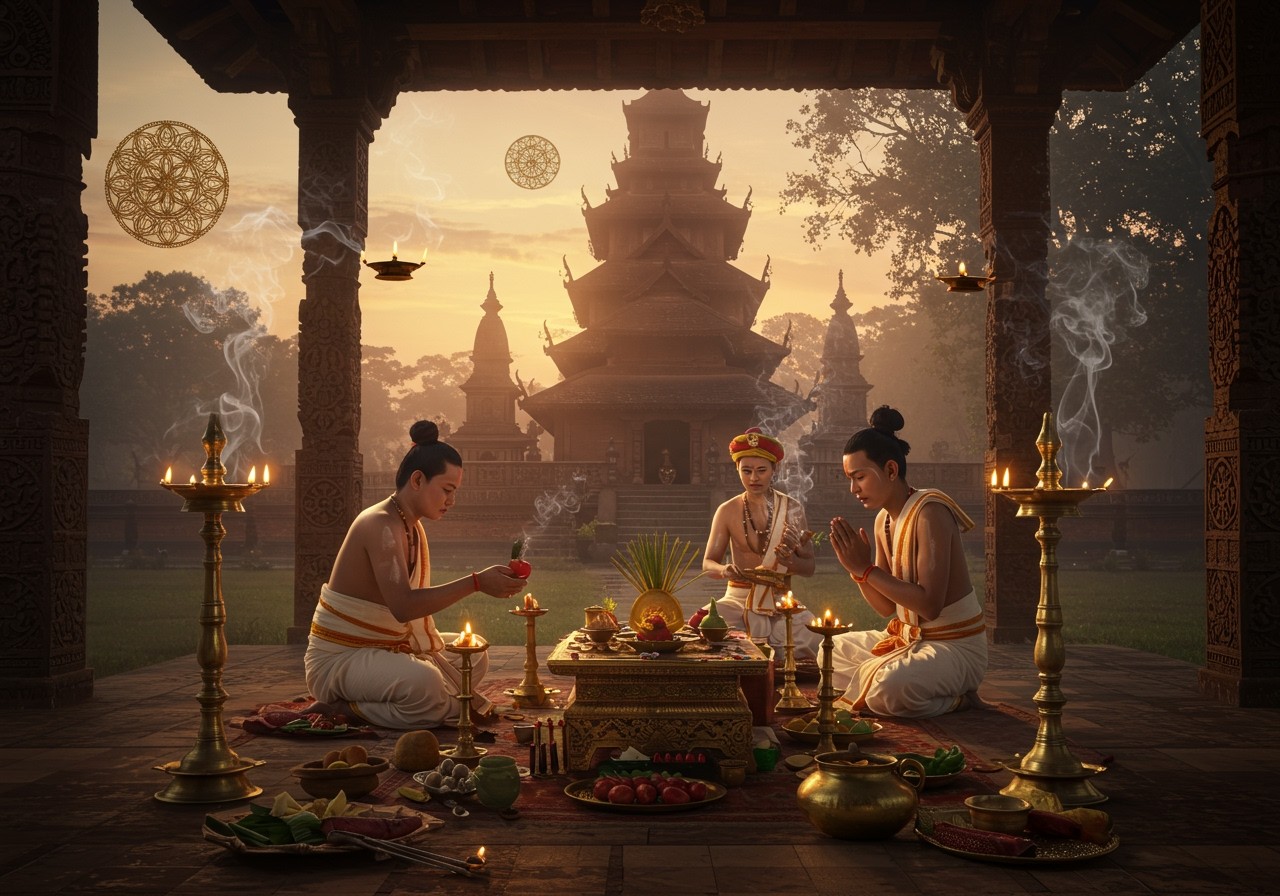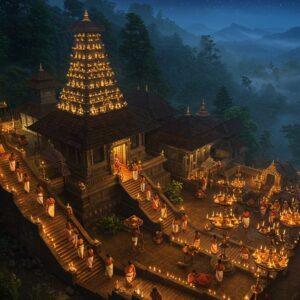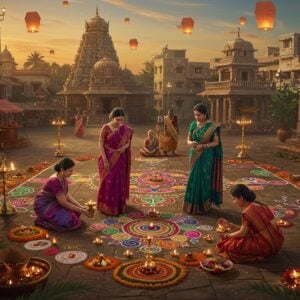
Delve into the fascinating world of traditions and customs associated with Susenghphaa, also known as Pratap Singha (1603-1641 AD), the 17th king of the Ahom dynasty. His era represents a significant period in Assam’s history, intertwining with the broader cultural practices of the Ahom kingdom. These traditions offer a glimpse into a rich past, reflecting the values and beliefs that shaped Assamese society.
Understanding the Ahom Influence
The Ahom people, originally from present-day Myanmar, brought their unique customs and traditions to Assam. Their cultural practices, blended with local influences, created a vibrant tapestry that continues to resonate today. Let’s explore some key aspects of this fascinating heritage:
-
Religion and Spirituality: The Ahom people followed their own religious traditions rooted in ancestor worship and animism. They revered deities called Phi and Dam, representing ancestors and spirits. While their original beliefs shared similarities with other Tai folk religions, they also incorporated elements of Buddhism, creating a unique spiritual landscape.
-
Festivals and Celebrations: The Me-Dam-Me-Phi festival stands out as a prominent tradition, honoring ancestors with rituals and ceremonies. Celebrated in areas with a significant Ahom population, such as Sivasagar, Jorhat, Charaideo, Tinsukia, and Dibrugarh, this festival reflects the deep-rooted respect for lineage and heritage.
-
Cultural Integration: The Ahoms integrated seamlessly with the local cultures, embracing aspects of indigenous religions, languages, and customs. This harmonious blend resulted in a rich cultural exchange, where the Tai language gradually intertwined with Assamese and Sanskrit, leaving a lasting impact on the region’s linguistic landscape.
-
Social Structure: The Ahom society had a hierarchical structure, with the king at the top, followed by nobles, officials, commoners, and slaves. This structure influenced social interactions and governance, shaping the dynamics of the community.
-
Lifestyle and Practices: Agriculture, particularly rice cultivation, played a vital role in their economy. They used special rice varieties like bora rice during festivals like Bihu. Their food habits were traditionally non-vegetarian, with a cuisine incorporating local ingredients and unique dishes. Rituals for marriage and death held significant importance, marking key life events with traditional ceremonies.
Susenghphaa’s Enduring Legacy
Susenghphaa’s reign (1603-1641 AD) was marked by significant contributions to the cultural and administrative landscape of Assam. Here’s a look at some of his notable achievements:
-
Durga Puja: Susenghphaa is credited with popularizing Durga Puja celebrations with earthen idols in Assam. Inspired by the grandeur of Koch Bihar’s festivities, he introduced this tradition to his kingdom, establishing a lasting practice that continues to be cherished.
-
Administrative Reforms: Susenghphaa’s reign saw the expansion of the Ahom kingdom westward. To manage these new territories effectively, he created administrative offices like Borbarua and Borphukan. These reforms strengthened governance and contributed to stability.
-
Alliances and Conflicts: He strategically formed alliances with rulers like those of Koch Hajo, while also navigating conflicts with kingdoms like the Kachari kingdom. His political acumen and diplomacy shaped the kingdom’s relationships with neighboring regions.
-
Titles and Recognition: Known as “Burha Raja” (Old King) due to his age at ascension and “Buddhi Swarganarayan” for his wisdom, Susenghphaa’s leadership left a lasting impact on the Ahom kingdom.
Poojn.in: Your Companion for Ritual Needs
At poojn.in, we understand the importance of having the right items for your spiritual practices. We offer a wide range of products to support your observances and traditions:
-
Kusha Asan: Sacred kusha grass mats, traditionally used for Vedic rituals and ceremonies. Bring authenticity and reverence to your practices with these meticulously crafted asanas.
-
Suti Saree: Pure cotton sarees ideal for offerings and ceremonies. Honor traditions with these elegant and respectfully sourced sarees.
-
Incense Sticks: Enhance the ambiance of your rituals with fragrant incense sticks, creating a serene and sacred atmosphere.
-
Kumkum & Roli: Essential for traditional ceremonies, our pure kumkum and roli add a touch of auspiciousness to your rituals.
Explore our extensive collection at poojn.in and discover everything you need for your puja and spiritual practices. We offer convenient online shopping and pan-India delivery.
Connecting with Our Heritage
The traditions and customs associated with Susenghphaa’s reign provide a valuable link to our rich heritage. By understanding and appreciating these practices, we honor the legacy of the Ahom kingdom and its enduring influence on Assamese culture. poojn.in is committed to supporting your spiritual journey by providing authentic and high-quality products for all your ritual needs.
For more insights into Indian culture and traditions, explore our informative blogs:


